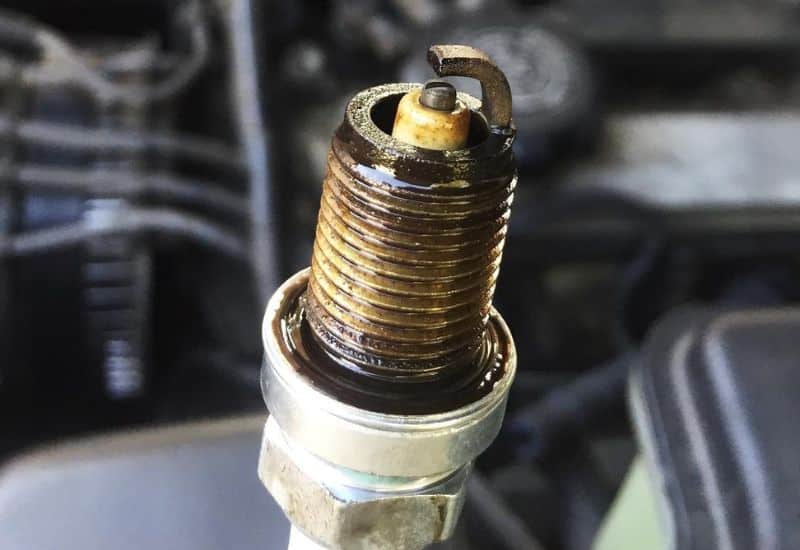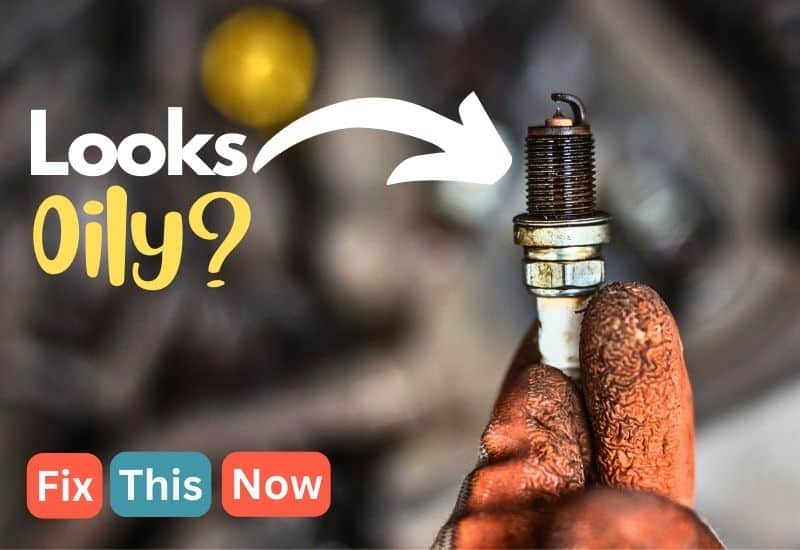
When fuel and air enter an engine, spark plugs ignite the volatile mixture, creating combustion that propels your vehicle down the road. This combustion system works closely with the engine oil lubrication network, but the two networks should always remain separate. Unfortunately, sometimes oil can leak onto the spark plugs, a telltale sign of a problem.
Oil on spark plugs can come from damaged o-rings, leaky valve covers or head gaskets, worn piston rings or pistons, bad valve guides, or VVT problems. To fix it, inspect the plugs, read the codes, or run a compression test before replacing the o-rings, any gaskets, or engine components.
This issue can be challenging to get to the bottom of. But I’ll help you understand what causes oil on spark plugs, how to find the cause, and ways to fix it so you can get back on the road.
Is a Small Amount of Oil on Spark Plugs a Cause for Concern?
Unfortunately, if you see your spark plugs are wet with oil, it suggests significant engine issues. This means something has malfunctioned, which might lead to additional problems. Noticing a bit of oil on the spark plug threads doesn’t match the severity of finding the tips drenched in oil or coated with carbon deposits. But in either case, it’s time to find out what is allowing the oil to get there and figure out how to fix it.
What Happens When Spark Plugs Get Wet with Oil?
Having spark plugs soaked in oil can cause issues with the combustion process that powers your vehicle. If it’s only a small quantity of oil, the spark plugs can still create combustion and they’ll transform the oil into carbon deposits, which can build up and cause problems.
However, if a larger amount of oil drenches the spark plug tips, it might weaken the spark, preventing it from igniting the fuel/air mixture effectively. This can result in immediate engine misfires, triggering check engine lights, and even catastrophic engine damage.
Driving with Oil-Contaminated Spark Plugs: Is It a Go or No-Go?

If you’ve already noticed oil on your spark plugs, you might wonder how far you can drive with the issue. Whether you can continue driving depends on the problem’s severity and what symptoms your can has, such as:
For instance, whitish-blue smoke or a gasoline odor from the exhaust are indicative of a problem, as are reduced engine performance and decreased fuel efficiency. Also, engine misfires, backfiring, and an illuminated check engine light are signs to heed.
It’s always best to repair oily spark plugs to avoid additional damage, but seeing a little white exhaust smoke that quickly goes away might not be that dire. If you don’t notice any significant change in performance and haven’t seen a check engine light come on, you can probably at least drive to the repair shop or auto parts store.
Other times, the situation can be worse. If you notice a strong gasoline smell, whitish-blue smoke billowing out the exhaust, or a dramatic drop in oil levels, those are signs of a more significant problem. It’s better to avoid driving if any of these happen.
Engine misfires or loud backfiring are signs of cylinder imbalances, often resulting in a check engine alert. Such issues demand swift attention. Most critically, if a flashing check engine light appears, stop driving immediately. This signals a major engine problem that could result in catastrophic failure.
Symptoms To Confirm Your Spark Plugs are Oil-Contaminated

Oil isn’t the only liquid that can get on your spark plugs. You can take a close look at your exhaust for an indication of what fluid is on them, such as:
Another way to identify which fluid is on your spark plugs is by taking the spark plugs out. Gasoline will have the telltale smell we all know and will evaporate quickly. Coolant smells sweet and typically has a green or orange color. Oil is the thickest liquid that’s difficult to wipe away.
6 Reasons Why Your Spark Plugs Are Wet With Oil
Let’s walk through some of the most common reasons oil gets on spark plugs.
1. Damaged Spark Plug O-Rings or Seals
A leaky O-ring seal often results in oil contamination on spark plugs. To maintain their functionality and prevent external contaminants, spark plugs are housed in specialized wells. Surrounding these wells are O-rings or tube seals, which act as barriers to keep unwanted substances, especially engine oil, out of the spark plug wells.
However, like all parts in a vehicle, these O-rings or tube seals can deteriorate over time due to wear and tear, temperature fluctuations, or exposure to harsh chemicals. When the O-rings or tube seals around spark plugs are damaged, engine oil can seep into the spark plug wells.
While the immediate effects of minor oil seepage might not be evident, it can lead to spark plug contamination over time. A clear indication of this issue is when you observe oil specifically on the threads of the spark plug rather than its tip. This is because the threads are closer to the seal, making them the first point of contact for any seeping oil.
Thankfully, it’s one of the cheaper and easier repairs. You’ll usually see oil on the spark plug threads rather than the tip if this is the cause.
2. Leaky Valve Cover Gaskets
Leaky valve cover gaskets frequently cause oil contamination on spark plugs. Acting as a a two-way barrier between the valve cover and engine, protect cylinder head hardware from the elements and prevent oil from escaping the engine. Designed with materials like rubber and cork for their adaptability and strength, valve cover gasket aren’t immune to the engine’s challenging conditions. The acidic engine oil and daily operations weaken and wear them down over time.
Once flexible and robust, these seals crack and wear down, losing their sealing function. This wear allows oil to seep into the engine’s high-temperature areas. Such deterioration can cause oil to leak significantly, sometimes trickling down into the spark plug galley. Oil-contaminated struggle to ignite the air-fuel mixture efficiently, leading to engine misfires and reduced performance. So, addressing and repairing a leaky valve cover gasket quickly becomes essential to prevent bigger engine issues.
3. Blown Head Gasket
A failing head gasket often results in oil-contaminated spark plugs. A head gasket serves as a seal between the engine block and cylinder head, preventing seals the internal combustion process and keeps coolant and oil from mixing together. It’s crucial for keeping oil off your spark plugs.
But over time, with constant pressure and heat, the gasket might leak or crack, resulting in the dreaded ‘blown head gasket’.
As this happens, engine oil starts entering places it shouldn’t, especially the combustion chamber. This oil then leaks into the spark plug wells and onto the threads, reducing spark plug efficiency and engine performance.
4. Worn Piston Rings or Pistons
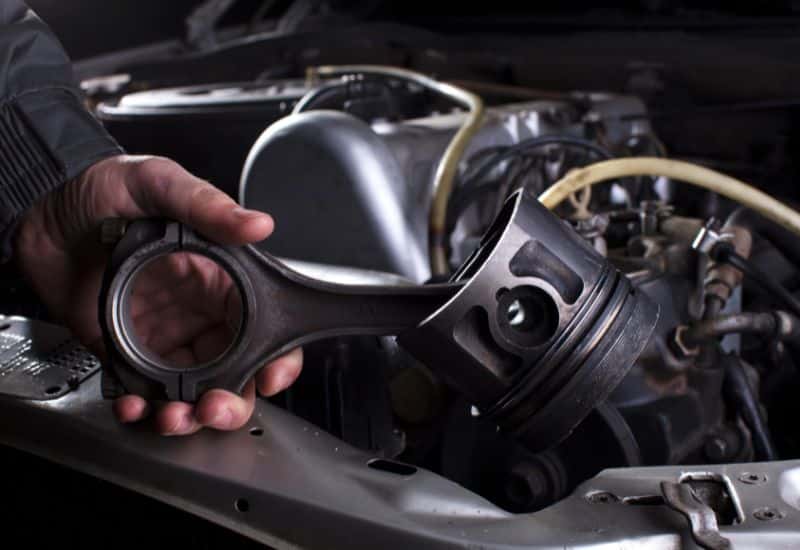
If your piston rings or pistons wear down, fracture, or have any other flaws, the oil can be pushed through to the tip of the spark plugs. It may result in carbon buildup on the spark plug, resulting from oil continually soaking it and then burning off during ignition.
The rings or pistons themselves can become damaged or worn over time, especially if engine misfires occur.
5. Bad Valve Guides
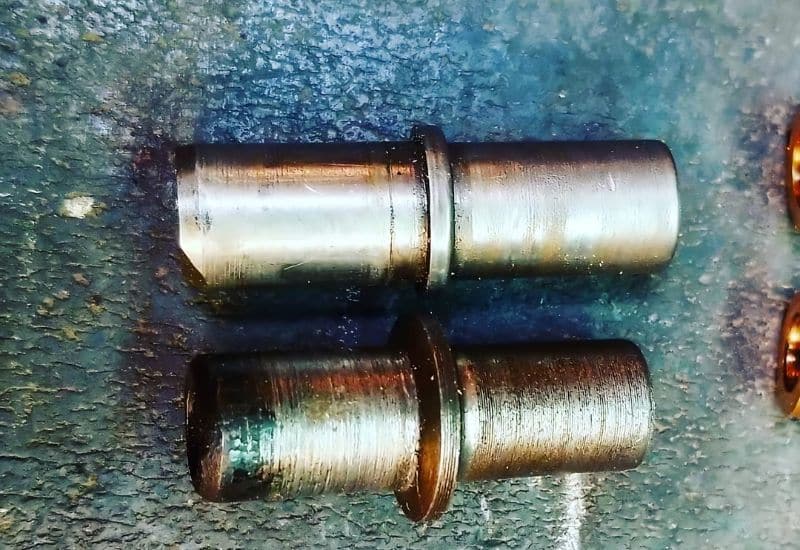
As valve guides fail from the repetitive motion, it can cause oil to enter the combustion chamber and foul up the spark plugs. Instead of just doing their job of controlling the intake and exhaust airflow, valve guides might start to act like an oil pump, sending it spewing onto the spark plugs.
6. VVT and Cylinder Deactivation Problems
When variable valve timing (VVT) and cylinder deactivation technologies aren’t working as intended, they can create too much of a vacuum. This can pull the oil through the piston rings and get oil on the spark plugs and cause other problems.
How Do I Fix Oil on Spark Plugs?
There are some steps you can take to fix it yourself, especially if the problem falls under the less-series issues.
Identify Cause

The first step to fixing oil on spark plugs is to locate the cause. Since many different failed parts can cause this, it would be wasteful to start randomly throwing parts at it. Instead, take a moment to see if you can uncover the precise way oil is getting in by:
Start by taking a close look at the spark plugs and surrounding area. Determine which part of the spark plug the oil is on. If it’s the outside threads or boot of the spark plug, this points toward leaking o-rings, tube seals, or maybe a valve cover gasket.
But if the oil is on the tip of the spark plug, then this points to a more serious engine problem. It could be a leaky head gasket, failed piston rings, or bad valve guides.
If your check engine light is on, connect an OBD-II reader to your vehicle and read the codes. These can give you some vital clues as to what is wrong.
The compression test is another advanced method with a specialized tool to figure out the problem behind oily spark plugs. A brief overview of the test is to remove the spark plugs, thread in the compression gauge, and measure the compression as you crank the engine a specific number of revolutions. There should be sufficient pressure, usually over 100 psi, in each cylinder, and they should not vary between each other by more than 10%.
It’s not always easy to figure out what caused your spark plugs to get covered in oil. If you weren’t able to identify it based on this process, you might want to take it to a mechanic before wasting efforts fixing things.
Repair O-Rings and Valve Cover Gasket
It’s estimated that around 80% of the causes behind oil on spark plugs are due to issues stemming from the o-rings or valve cover gasket. Thankfully, both of these are relatively affordable parts, and if you are mechanically inclined, you might be able to tackle them at home by following these steps:
How To Handle Other Engine Problems
If you couldn’t figure out the cause behind your oily spark plugs or if your attempted repairs did not fix the issue, it’s probably time to reach out for professional help. The number of causes behind the spark plugs becoming wet with oil is vast. Experienced mechanics can quickly help identify the problem.
Seeing oil on your spark plug tips can point to a failed head gasket, worn piston rings or pistons, or bad valve guides. It could also point to VVT or cylinder deactivation problems.
The repair process for these causes is more intense. They are deeper in the engine and can involve more intricate mechanisms and components. In many cases, even an experienced hand will take a lot of time to repair them.
If you are a talented DIYer, you might be able to tackle the project yourself. But most people are better off taking it to a professional mechanic.
How Can I Prevent Oil from Leaking onto the Spark Plugs?
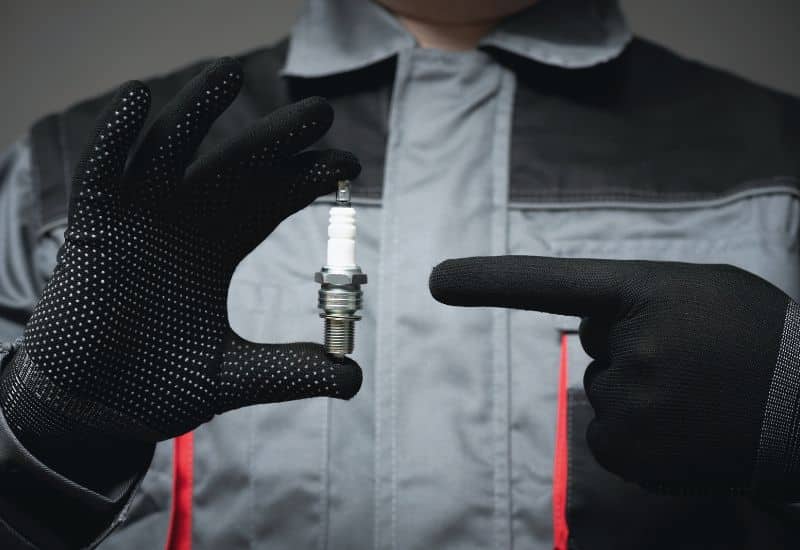
Once you get your vehicle repaired, there are some steps you can take to prevent oil from leaking onto the spark plugs again. The most important one is to follow the routine maintenance schedule for your vehicle, including regular oil and coolant changes, plus periodic spark plug replacement.
By keeping your engine in solid working order, it will have fewer chances of encountering overly stressful situations and having head gasket or piston failures. Failing to replace oil on time leads to increased friction. Using old coolant leads to more overheating. And using old spark plugs can result in a lack of even combustion. All these can cause problems that might lead to oil on your spark plugs.
Driving less aggressively can also help. Hard acceleration, especially if the engine isn’t warm, puts more stress on the components.
By following these tips, you have a better chance of keeping your spark plugs free from oil. They can ignite the fuel with the precision they are meant to have.
Why Are My Spark Plugs Wet With Oil? Wrap Up
If you see oil on your spark plugs, then there is a problem somewhere in your vehicle. To avoid more problems, you want to identify the problem and get it repaired. White smoke or gasoline smell can come from the exhaust. Or you might notice decreased performance or fuel economy. A check engine light from misfires can also happen.
First, perform a visual inspection to verify it is oil and see where it is. Whitish-blue smoke and a thick fluid on the plugs confirms it’s oil, not gasoline or coolant. If oil is on the threads or boot of the spark plugs, this might be good news that it’s the spark plug o-rings or valve cover gasket. Replacing these components is fairly straightforward and might fix your problem.
If you have a check engine light on, attach an OBD-II scanner to pull the codes to figure out what’s wrong. If the oil is on the tip of the spark plugs, it might point to a more serious engine issue, such as a head gasket failure, worn piston rings or pistons, bad valve guides, or problems with VVT or cylinder deactivation, which likely require professional assistance.

Written By
Jason Farrell
Jason Farrell is a certified master technician, the editor of Mechanic’s Diary in Pittsburgh, Pennsylvania. He is ASE (Automotive Service Excellence) certified and earned a Bachelor’s Degree in Automotive Technology from Pittsburg State University. With nearly 18 prior years of experience in the automotive field, he has extensive knowledge about Domestic, European, and other foreign makes and models of cars and light trucks. Jason’s experience working as a technician and service manager at dealerships, gave him the experience and know-how of most aspects of inspection, diagnosis, and repair from engine and drivability to electrical, HVAC, brakes, steering and suspension and everything in between.

